Where Is Asbestos Found in the Environment? 4 Common Places
-

- Last updated:
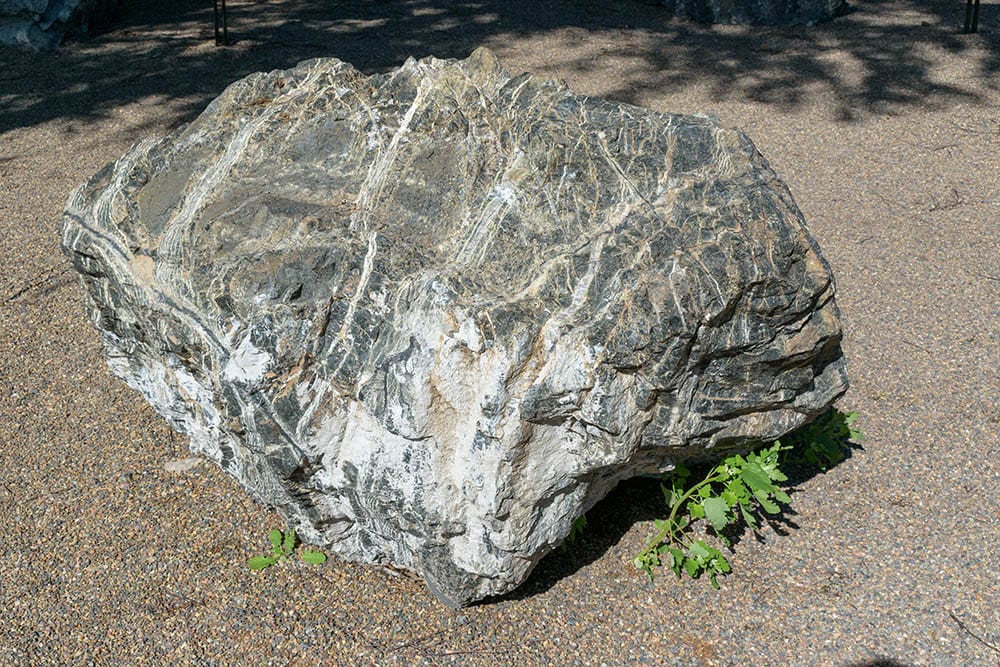
Asbestos is a naturally occurring mineral with applications in various industries due to its ability to resist exposure to fire, water, chemicals, and heat. Unfortunately, if one is exposed to asbestos fibers through inhalation, one could develop diseases like mesothelioma and asbestos-related illnesses.
Before asbestos usage was banned, occupational exposure was the number one driver of mesothelioma mortality. However, recent studies have shown that environmental sources also account for a high percentage of asbestos-related cases.
Since it is hard to detect the presence of high asbestos exposures in the environment, you must know how to recognize and identify these environmental exposure sources to reduce the risks of asbestos-related illnesses in the future. In this article, we will discuss the different types of asbestos and where to find the mineral in the environment.
The 2 Types of Asbestos
Before we explore asbestos-prone areas, let’s look at the different types of asbestos available in the environment. Asbestos is generally used as a term to describe the only known cause of mesothelioma in the environment. Yet, according to the Occupational Safety and Health Administration¹ (OSHA), there are six different types of asbestos belonging to two main groups: amphibole asbestos and serpentine asbestos. Every type of asbestos is highly carcinogenic.
1. Amphibole Asbestos
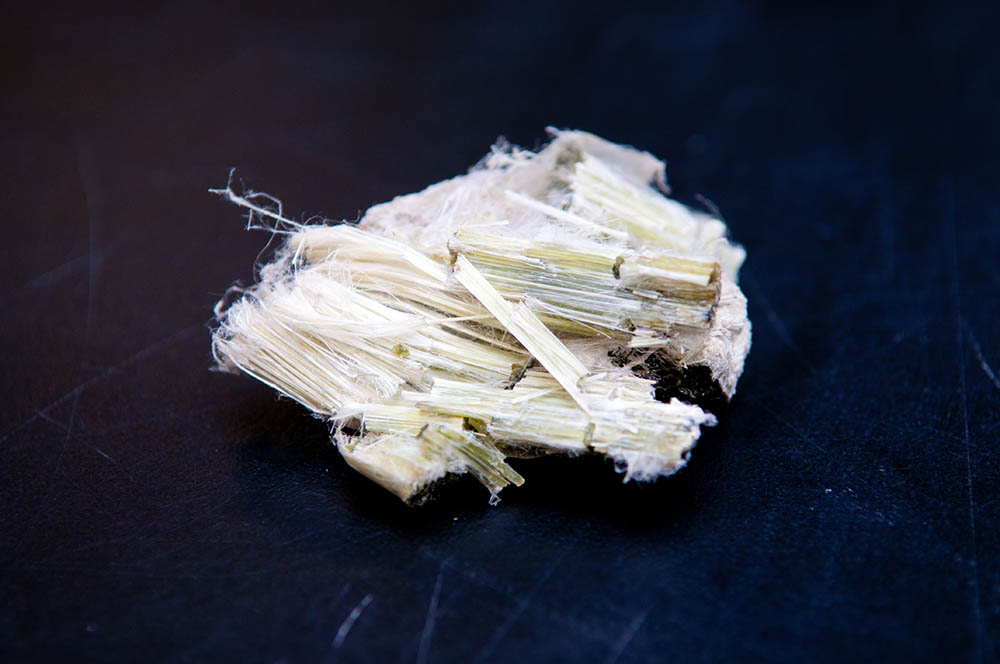
Amphibole asbestos makes up five of the six types of asbestos in existence.
- Actinolite: This type of asbestos has had applications in the construction industry and was used on sealants, cement, dry walls, and paint.
- Amosite: This mineral is commonly referred to as asbestos and is native to South African mines.
- Anthophyllite: This asbestos variant is usually yellow or brown in color and was initially used to make insulation and cement.
- Crocidolite: This type of asbestos takes on a blue color and is normally found in Australian and African mines. Crocidolite is considered the most dangerous asbestos variant and was rarely used for commercial purposes.
- Tremolite: This type of asbestos is highly heat-resistant and was mainly used in insulation, paint, and other materials.
Amphibole asbestos materials are made up of needle-like fibers. When disturbed, it will only take a small concentration of the material to cause cancer, thus it is considered more dangerous. Luckily, its application was not as widespread as chrysotile asbestos.
2. Serpentine Asbestos
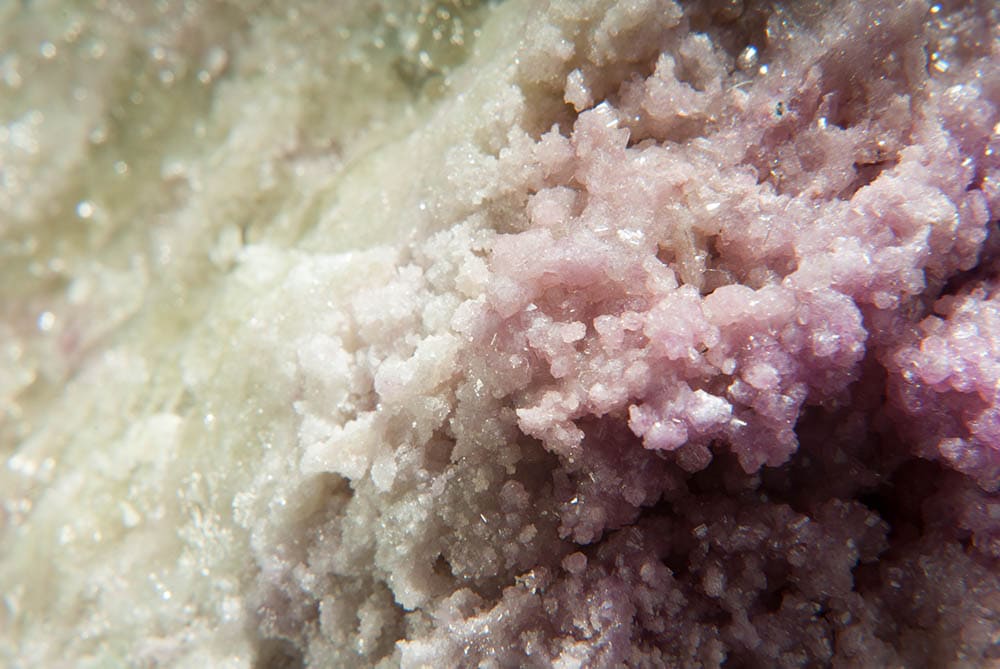
This is the most common type of asbestos, mainly used in industrial applications. Chrysotile asbestos, also known as white asbestos, is the only type that belongs to this group. Unlike amphibole fibers, chrysotile fibers are curly and layered. According to asbestos experts, about 95% of the asbestos used in the USA is serpentine asbestos.
It is mainly used in cement, floor tiles, roofing materials, gasket materials, and linoleum. Since chrysotile was used more than amphibole asbestos, most of the recorded mesothelioma cases in history arise from the use of asbestos in this group.
The 4 Common Places Asbestos Is Found in the Environment
Everyone is exposed to low levels of asbestos in the environment through inhalation. Small quantities of asbestos are always present in the air. They are released into the atmosphere by natural processes such as weathering on asbestos-containing materials or blown by the wind from asbestos-containing sites that are improperly covered. The particles could even rise from deteriorating automobile components such as the clutch or even the breakdown of materials made from asbestos such as insulation.
As earlier mentioned, asbestos is a naturally occurring mineral with deposits worldwide, including in Russia, China, the United States, and South America. It usually lies dormant and undisturbed until mining operations remove the mineral from the ground for use in different products. Even though asbestos mining was officially shut down in the US by 2002, the risk of asbestos exposure is still prevalent today.
The materials are still present in products made before the ban. It can be traced near industries that dealt with the material, and it can be found naturally occurring in geological formations. Below, we will outline the common sources of asbestos poisoning found in the environment. We have classified the sources into asbestos-containing products, naturally occurring asbestos, environmental exposure from industrial operations, and exposure from an occupational setting.
1. Exposure to Asbestos-Containing Products
Initially, asbestos was used on common household products because it was cheap, readily available, and versatile. It also had fire resistance and insulating properties.
It was mainly used to supplement building materials such as cement. Asbestos materials were also used in the automotive industry to make components such as brakes, and clutches. The materials were also used in the manufacturing industry to make firewalls, and ovens, among others.
Today, there are thousands of asbestos–containing products¹ commercially sold throughout the world or already fixed in place. These products vary from adhesives, textiles, ductwork parts, automotive brakes, flooring, and roofing materials. Sure, they may have been banned about half a century ago, but most people still live in regions where commercial asbestos use is still very much active. Even countries that have taken the initiative to ban these products still stand strong as a legacy of past use.
In fact, a report by the Center for Disease Control and Prevention¹ shows that in the US, approximately 1.3 million construction workers are exposed to asbestos during the demolition and renovation of old buildings. This is particularly common in properties made with a specific attic insulation product.
Also, in Australia, about 5% of mesothelioma cases are a result of DIY home maintenance and renovation activities. The products not only expose construction workers to the harmful effects of asbestos but also other household members in the homes undergoing renovations.
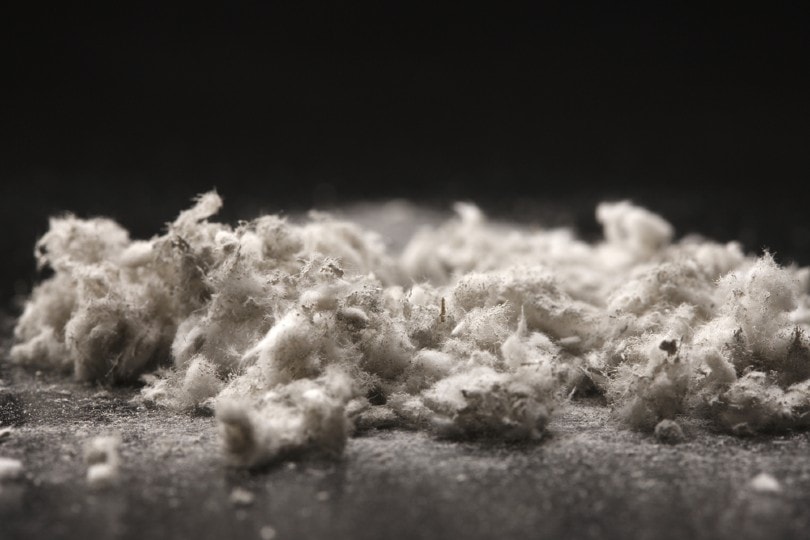
2. Naturally Occurring Asbestos
One can experience asbestos poisoning symptoms by exposure to asbestos and the related fibers through unintended contact with naturally occurring geological formations. Naturally occurring asbestos includes asbestos-looking fibrous minerals found deep in rock and soil formations. The concentration of asbestos is usually lower in this location, way less than that found in an area that has been exploited for mining.
Naturally occurring asbestos is common in populated areas. When the mineral fibers are aerosolized via anthropogenic activities and natural dust emissions, they increase the inhalation hazard.
- Road and building construction.
- Harvesting soils and rocks for local use.
- Any recreational activities that produce dust.
Therefore, communities living in areas with asbestos deposits are at a higher risk of developing asbestos-related illnesses.
3. Industrial Operations
This is perhaps the leading cause of asbestos poisoning and is tied to the extraction, processing, and industrial use of asbestos. Over the years, many residential communities that work in these asbestos-producing industries have been subjected to neighborhood contamination from commercial ventures.
- Airborne emissions via loading, processing, and ventilation
- Waste disposal activities
- Local use of asbestos industrial waste products in road construction
- Soil Amendments
Several research studies have been conducted to determine the risk of asbestos-related illnesses¹ concerning residential proximity to an asbestos industrial source. According to the findings, people who live within 2000 miles of asbestos cement plants, asbestos mines, shipyards, asbestos textiles, or brake factories are at a higher risk of getting mesothelioma.
4. Occupational Exposure
Also referred to as para-occupational exposure¹, this refers to the situation where people can get asbestos exposure from a worker in the asbestos industry. Workers get to serve as a vector for transporting asbestos fibers from the workplace to homes. Other related terms used for this context include domestic exposure, household contact, or take-home exposure.
Unlike other asbestos contamination from asbestos-containing products or naturally occurring asbestos, you can also experience the symptoms from indirect exposure to the toxic material from a high-risk occupational setting. You could also be exposed by interacting with a family member who works in an asbestos-producing industry.
In an occupational setting, the most common activity associated with para-occupational exposure is the laundering of contaminated clothes between workers. Most studies have found that women are usually at the most risk of asbestos poisoning because they usually wash their clothes off or live with an asbestos worker. However, the potential to take the mineral fibers home is about 1% of occupational exposures. Other activities such as cleaning will disturb asbestos fibers and be transported by the workers to their homes.
In addition, the vehicle that the worker drives will also serve as a route for para-occupational contamination of household members. The asbestos dust from the factory could stick to the vehicle’s components and contaminate your home environment after work.
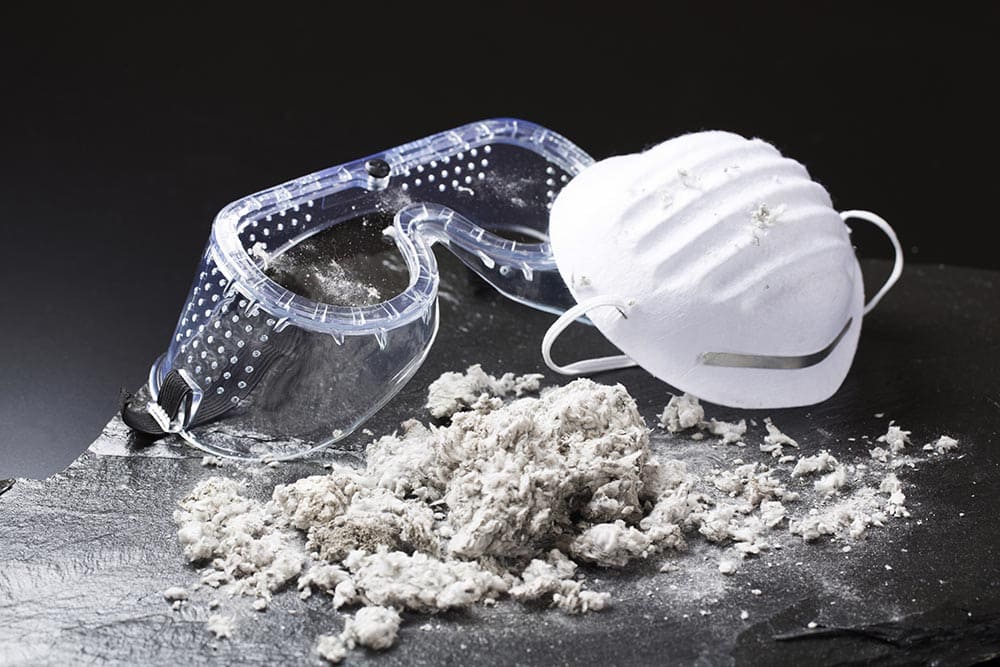
Tips for Handling Asbestos
If you discover some of your home fixtures are made from hazardous asbestos materials or you want to renovate an old building that features the material, sometimes removal is the only way to go. However, it may be safer to leave the materials undisturbed. Alternatively, you could use a sealant to prevent them from spreading their fibers on your property. But consulting a trained and certified asbestos expert is the best way to deal with asbestos.
Some states allow homeowners to remove asbestos materials from their property on their own. So, if you want to remove or demolish asbestos-containing materials, remember to notify your neighbors. Failure to, you could get slapped with the Nuisances Act, which states that any nuisances that are deemed offensive or dangerous to health are subject to investigation by an environmental officer or your local council.
Though risky, if you want to try out DIY asbestos abatement, consider the following safety precautions.
- Always seal off your work area, preferably with plastic sheets, and shut off the air conditioning.
- Invest in an NH6 respirator equipped with a high-efficiency particulate (HEPA) filter when removing asbestos.
- Most people might think that you can get asbestos poisoning from swallowing or inhalation, but you should also cover your body with gloves and overalls during the abatement process.
- Always keep the asbestos materials wet using a sprayer. This will help the dust particles, preventing the fibers from floating in the air.
- Remember to clean the work area after use with wet wipes or a vacuum cleaner equipped with a HEPA filter.
- After finishing the removal process, dispose of the asbestos materials in clearly labeled bags and dump them in a landfill that accepts asbestos products. According to the law in most states, these products should be dumped on a site only approved by the EPA¹. It is illegal to dump in a normal rubbish heap.
- Never use sanding discs, power tools, or abrasive cutting on asbestos-cement products. Only use non-powered hand tools such as a handsaw. It can create a smaller quantity of coarser dust and waste chips.
Conclusion
As seen, asbestos is naturally occurring deep in soil and rock formations, but when mined, its fibers are released into the environment, increasing the risks of mesothelium and asbestos-related diseases like lung cancer. Due to its applications in various industries, asbestos is present in the environment in concentrations that are harmful to humans and animals.
Typically, you can find traces of asbestos close to industries that carry out asbestos operations, in normal household products and household fixtures such as insulation, flooring, and roofing from old houses.
If you are worried about the risk of exposure to some asbestos-containing products, contact a trained asbestos professional to assist with the abatement process.
- Related Read: When Was Asbestos Used in Homes? What You Need to Know!
- https://www.osha.gov/asbestos
- https://www.asbestos.com/products/
- https://www.ncbi.nlm.nih.gov/pmc/articles/PMC2718408/
- https://www.asbestos.com/occupations/#:~:text=Occupational%20asbestos%20exposure%20is%20the,to%20asbestos%20in%20the%20workplace.
- https://www.epa.gov/asbestos
- http://www.hse.gov.uk/asbestos/building.htm
- https://www.worksafe.vic.gov.au/understand-and-manage-asbestos-workplaces
- https://www.asbestos.qld.gov.au/resources/films/working-safely-asbestos-home-renovator
Featured Image Credit: Tim-photo-video, Shutterstock
Contents


